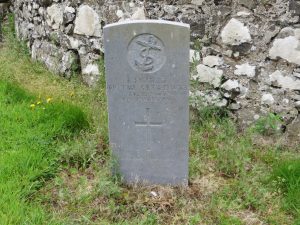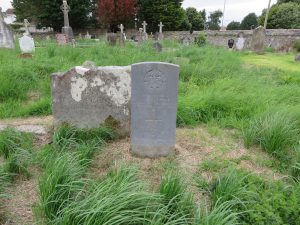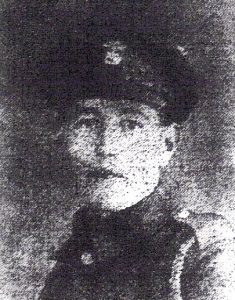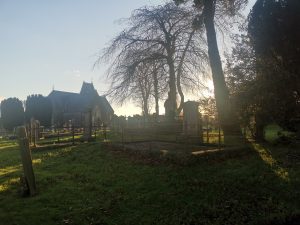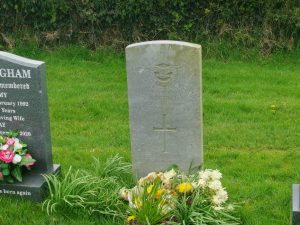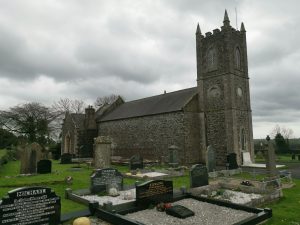Milligan, J (Joseph)

Milligan, J (Joseph)
Private Joseph Milligan was the son of Joseph and Margaret Milligan, of Rainey Street, Magherafelt, Co. Londonderry. He enlisted in the army on the 14th of November 1914. His war began when he originally landed in Boulogne,[1] France on the 5th of October 1915 along with the 10th Inniskilling Fusiliers. There were 1029 men, all ranks.
At 14.00 they went on a route march with their band from Boulogne, arriving at 10.00 the following day at Gare Central station[2] where they entrained and travelled to Coisy[3] and were billeted. At this point they started training and improving where they slept. Soon they were on the move again. Training continues, and they were eventually attached to other battalions at Hebuterne[4] to help them gain some experience in trench warfare.
Training continued, and the battalion marched from area to area. When the time came to celebrate the “Closing of the Gates of Londonderry (December 1668)”, the battalion still had no casualties or real front-line experience.
During March, they went to Forceville[5] and the trenches at Thiepval Woods[6] where they relieved the 9th Royal Inniskilling Fusiliers and started receiving their first casualties. This continued into April and up until May when they moved to Léalvillers[7] The battalion remained here until mid-June when they moved back to Forceville and the Thiepval Woods area.
On the evening of the 30th of June 1916, the battalion moved forward to take up their positions at Thiepval Woods. Whilst walking through Aveluy Woods[8] towards the trenches the 10th Inniskillings commanding officer, Lieutenant Colonel Ross Smyth slipped and sprained his leg and was evacuated. A bad omen of things to come.
With the 9th and 11th Inniskilling Fusiliers on their right and 14th Royal Irish Rifles with them they waited in crowded trenches on the 1st of July for the bombardment of the German lines to finish. The men were all issued a portion of rum as they paused before putting their training into place and entering “No man’s land”, playing their part on the day of the “Great attack”.[9]
The battalions got mixed up as they advanced causing some confusement and even worse advancing too quickly, this caused heavy casualties from friendly fire. Within 100 yards of the enemy’s trench, they lay down awaiting the moment to attack. The company bugle calls soon followed announcing their orders to advance again.
All-in-all 764 men left the trenches, only 346 returned. The battalion eventually left the front line on the 2nd of July to regroup and rest, but only until August when they were redeployed at Ploegsteert Woods.[10]
Time passed by whilst the battalion continued to receive casualties and new recruits, raid German trenches, man trenches, bomb, be bombed and repeat. This continued until the end of October when they went to the village of Dranoutre,[11] to rest, bathe and be reissued uniform.
The Inniskillings remained here until mid-November when they set off to the Ypres area of Belgium, to man the trenches at Bailleul.[12] They stayed here right through to the end of the year when they moved to Ploegsteert Woods. Here the stayed until February when they went to Bulford camp and became divisional reserves. March ended with the battalion taking part in Brigade sports in Acquin-Westbécourt,[13] with mixed success. By Mid-April they had returned to the trenches in the Spanbroek sector.[14] They remained in this general area until mid-May when the Inniskillings moved from the front to Wakefield Huts, in the rear. Even here though they received shells throughout their stay.
The end of June found the men in the trenches again in the Spanbroek sector. Casualties over the previous few months were all from German shells except for Private Joseph Milligan, who was wounded on the 28th by gunshot wounds to the right thigh and leg, left shoulder, and left foot while in trenches at Messines Ridge.
As the year went by Joseph’s wounds healed. During May he was transferred to the Military Orthopaedic Hospital, Shepherd’s Bush, to receive better treatment as he was unable to walk without a stick and even then, not extremely far. He was treated for 5 more months before transferring to the Ulster Volunteer Hospital in Belfast.
Unfortunately, just 4 months later, Private Joseph Milligan died, after suffering for only 7 days with pneumonia. He was at home with his father by his side when he took his last breath. At the time it was attributed to his wounds but may have been the case that he was a victim of the Spanish Flu.
The Spanish flu is rather deceiving as it did not originate in Spain, but rather it was first openly reported on in Spain due to its neutrality in the war.
The outbreak began around January 1918 and ended at the end of 1920. There were three major outbreaks, each deadlier than the previous. Great efforts were made to suppress the news, but so many people were affected that it became pointless as the flu crept through the armies into the villages, towns, and cities of Europe. There were no vaccines to protect against this flu virus or the infections. No antiviral drugs to treat it, and no antibiotics to treat secondary bacterial infections like pneumonia. The only tools that authorities could implement was the promotion of good personal hygiene, isolation, and quarantine of the ill, along with the closures of public places.
There are several servicemen in the Counties Cemeteries who possibly died of the illness, most of whom were diagnosed with meningitis, flu, or pneumonia. It especially affected young adults.
Private Joseph Milligan was awarded the 1914/15 Star, the British War and Victory Medals.
Date of Death: 03/12/1918 (Aged 29)
Service: Private, 10th Battalion Royal Inniskilling Fusiliers
27th Battalion, Royal Inniskilling Fusiliers
Service Number: 19164
Burial Location: Section D, Grave 36.

[1] Boulogne or Boulogne-sur-Mer is a coastal town in northwest France.
[2] Gare Central station is around 16 miles south of Boulogne.
[3] Coisy is around 60 miles, southeast of Gare Central station.
[4] Hebuterne is an area in France around 20 miles northeast of Coisy.
[5] Forceville in an area in France in between Thiepval Woods and Léalvillers.
[6] Thiepval Woods is around 6 miles south of Hebuterne.
[7] Léalvillers is an area in France around 7 miles east of Thiepval.
[8] Woods just west of Thiepval Woods.
[9] Great attack, later called the battle of the Somme.
[10] Ploegsteert Woods is in southern Belgium about 60 miles north of Thiepval Woods.
[11] Dranoutre is a small village in Belgium around 6 miles west of Ploegsteert Woods.
[12] Bailleul is an area in Belgium 6 miles northeast of Dranoutre.
[13] Acquin-Westbécourt is an area in northwest France.
[14] Spanbroek sector is in Spanbroekmolen, Belgium. A few miles south Ypres and close to Kemmel village.
